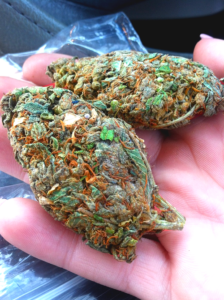
Weed in Douliu Introduction
Douliu, the capital of Yunlin County in Taiwan, is a city known for its rich cultural heritage and agricultural significance. However, like the rest of Taiwan, Douliu adheres to strict anti-cannabis laws. This article delves into the legal framework surrounding cannabis in Taiwan, its cultural perceptions, enforcement practices, and the broader implications for residents and visitors in Douliu. Weed in Douliu
Legal Status of Cannabis in Taiwan
National Legislation Weed in Douliu
Cannabis is classified as a Category 2 narcotic under Taiwan’s Narcotics Hazard Prevention Act. This classification places cannabis in the same legal category as opium and cocaine, making its cultivation, sale, possession, and use illegal. Offenders can face severe penalties, including life imprisonment or a minimum of ten years in prison, along with fines up to NT$15 million (approximately US$460,000) (Wikipedia).
Enforcement and Penalties Weed in Douliu
Enforcement of cannabis laws is stringent across Taiwan, including Douliu. Authorities actively monitor and raid suspected cultivation sites. For instance, in 2024, a nearly 3-hectare cannabis cultivation area in Tainan was raided, leading to the detention of five suspects
Cannabis Culture and Public Perception in Douliu
Cultural Context Weed in Douliu
In Douliu, as in much of Taiwan, cannabis is not part of the mainstream culture. The public perception is largely shaped by the government’s strict stance and the absence of legal cannabis-related businesses. While there may be anecdotal instances of cannabis use or possession, these are exceptions and not reflective of the broader societal norms.
Public Awareness and Education Weed in Douliu
There is a growing awareness of the risks associated with cannabis use, especially among the youth. Educational campaigns and forums have been conducted to inform the public about the legal consequences and health risks of cannabis consumption
Enforcement Practices in Douliu Weed in Douliu
Local Law Enforcement
Douliu’s local law enforcement agencies collaborate with national authorities to monitor and enforce cannabis laws. This includes conducting surveillance, responding to tips, and executing search warrants when necessary. The city’s law enforcement is proactive in addressing any cannabis-related activities, ensuring compliance with national regulations.
Case Studies Weed in Douliu
In 2022, a man in Yunlin County, which includes Douliu, was found with 12 cannabis saplings and six maturing plants in his car. He had reportedly told his wife that he was planting a decorative maple tree, highlighting the lengths to which individuals might go to conceal illegal activities.
Broader Implications
Impact on Residents
For residents of Douliu, the strict cannabis laws mean that any involvement with cannabis—be it cultivation, possession, or use—can lead to severe legal consequences. This environment fosters a cautious approach to cannabis, with most individuals avoiding any association with the substance to steer clear of legal troubles.
Influence on Visitors
Visitors to Douliu should be aware of the stringent cannabis laws to avoid inadvertent legal issues. Even possessing trace amounts or attempting to import cannabis products can lead to serious legal repercussions .
Conclusion
Cannabis remains illegal in Douliu, Taiwan, under the country’s strict narcotics laws. The legal framework is robust, with severe penalties for violations. Cultural perceptions are shaped by these laws, leading to a general avoidance of cannabis-related activities. Enforcement practices are active and thorough, ensuring compliance across the region. For residents and visitors, understanding and adhering to these laws is crucial to avoid legal complications.
FAQs
Q1: Is cannabis legal in Douliu, Taiwan?
No, cannabis is illegal in Douliu under Taiwan’s Narcotics Hazard Prevention Act.
Q2: What are the penalties for cannabis-related offenses in Douliu?
Penalties can include life imprisonment or a minimum of ten years in prison, along with fines up to NT$15 million (Wikipedia).
Q3: Are there any legal cannabis products in Taiwan?
CBD products are legal but highly regulated, with permissible THC content significantly lower than international standards
Q5: How is cannabis use viewed culturally in Douliu?
Cannabis use is not part of the mainstream culture, and there is a general avoidance due to legal and social perceptions.
A sample seasonal plan for a small vegetable farmer in Douliu
Month-by-month actions (illustrative):
- Pre-planting (late dry season): Clean field edges and irrigation ditches. Prepare a stale seedbed
This schedule emphasizes early action, prevention of seeding, and organic matter building.
Community and policy-level considerations
Because many weed problems are landscape-scale (road verges, irrigation canals, riverbanks), municipal and community coordination matters:
- Coordinated timing for control. Synchronizing efforts (e.g., mowing or herbicide windows) with neighbors reduces re-invasion.
Safety, health and environmental tips
- Wear appropriate PPE (gloves, long sleeves) when hand-weeding to avoid cuts and arthropod bites.
- When using herbicides, follow label guidance, avoid mixing without recommendation, and store chemicals safely out of reach.
Final thoughts: living with weeds, not just fighting them
Weeds are part of the Douliu landscape—responses that accept this fact while reducing the costs and risks are most successful. That means shifting from “spray-and-forget” or never-ending manual labor to systems that reduce weed pressure over seasons: build soil health, increase crop competitiveness, prevent seed introduction, and use a mix of tactics tailored to specific species and sites.
I have used Global Weedworld (Globalweedworld@galaxyhit.com) at least 4-10 times and every time it has been a top notch.
He is the best local plug you can find around. He is very pleasant, friendly and fast. He is a lifesaver.
He sells top shelf WEED and other stuffs at moderate prices. I will always recommend this guy when people ask me my ” go-to”.
All you have to do is follow his instructions.
Just send him an email and I bet you will come back for more once you finish with what you bought because his quality is amazing.
Also Contact him on his telegram link telegramhttps://t.me/GlobalweedWorld
⚠️ Know that he do not have telegram channels only the telegram link above

I’ve been buying online for a while, but this shop’s service and product quality set them apart.
Everything was fresh, potent, and the customer service is outstanding
My first purchase and I’m hooked.
Excellent product and the customer support was super helpful in answering all my questions. Highly recommend this site
I’ve been buying from a lot of different places, but this one stands out. The bud is top-notch, and the prices are reasonable.
Will be ordering again soon! Amazing experience! The product was exactly as described,
and the packaging was on point—safe and odor-free. Thank you!
The experience was seamless, and the weed was top-tier. I’ve already placed my next order.
Thanks for the great service
Jack
Delivery was crazy fast, and the product… This place is setting the bar for online weed shops. Keep doing what you’re doing. You’ve got a loyal customer for life.
Best decision I made all week. Real ones know. This site is fire. I don’t usually leave reviews, but this deserved one.
I was worried about ordering online, but the packaging was perfect completely. You can tell they care about their customers. Fast replies and reliable support.